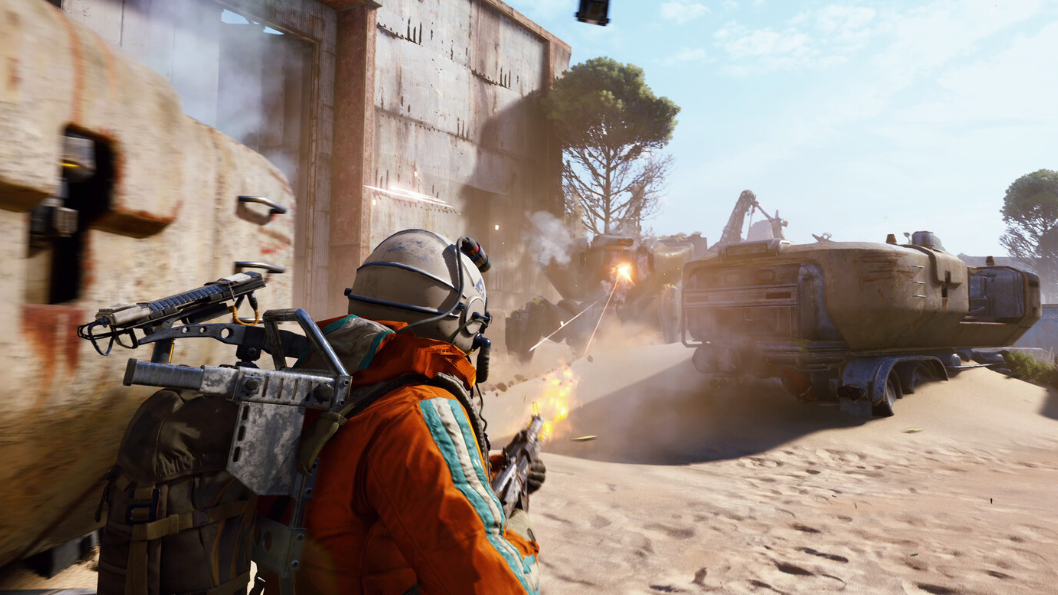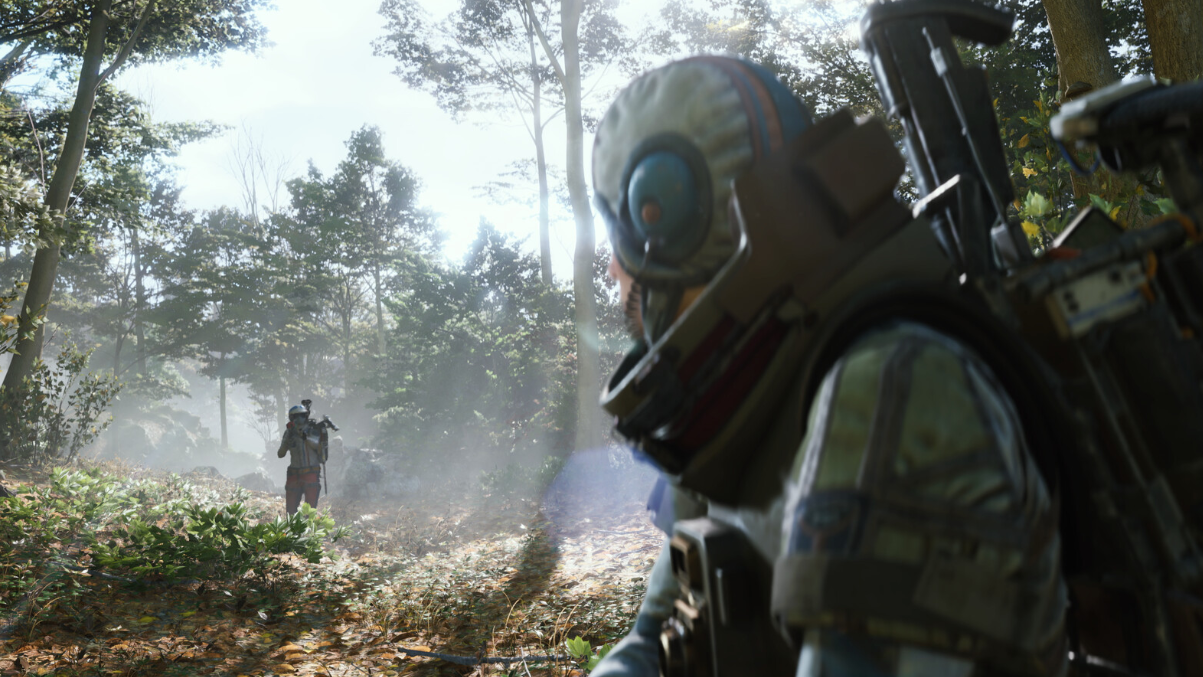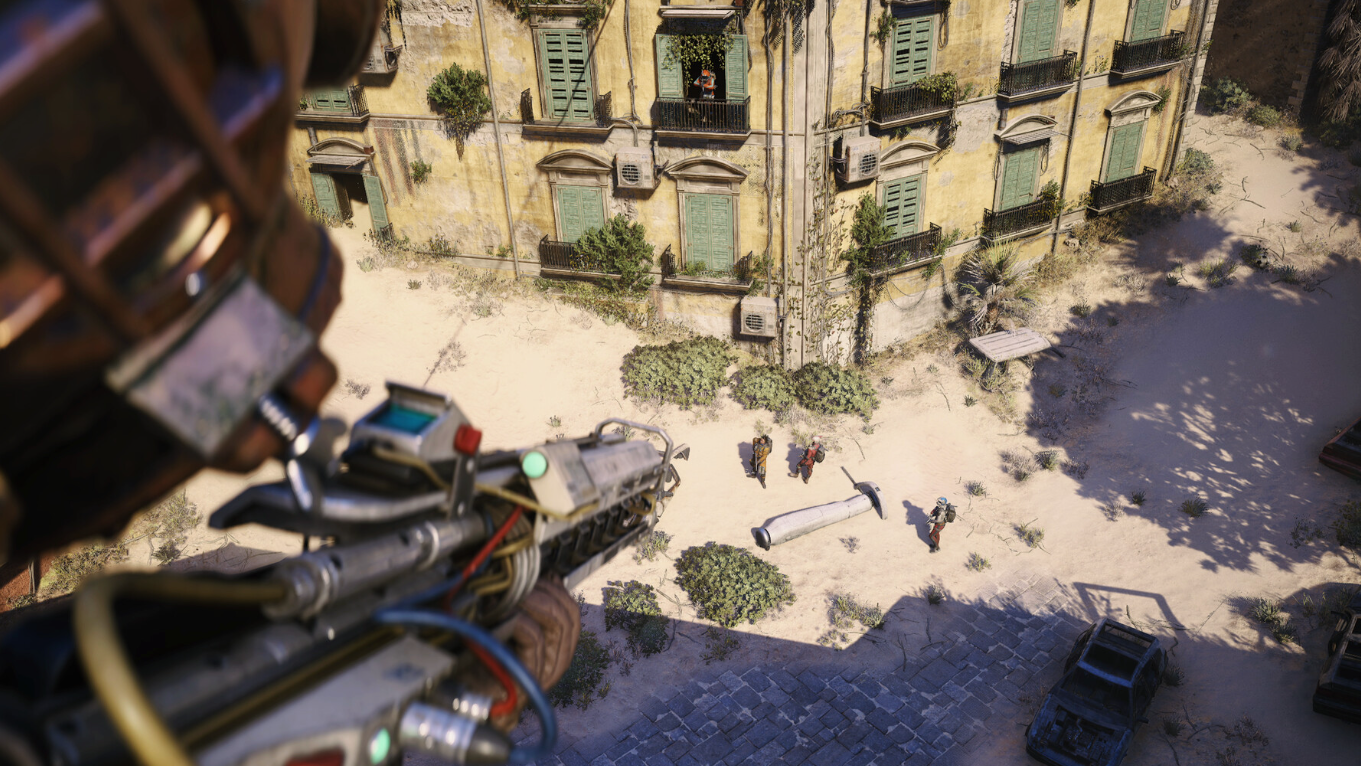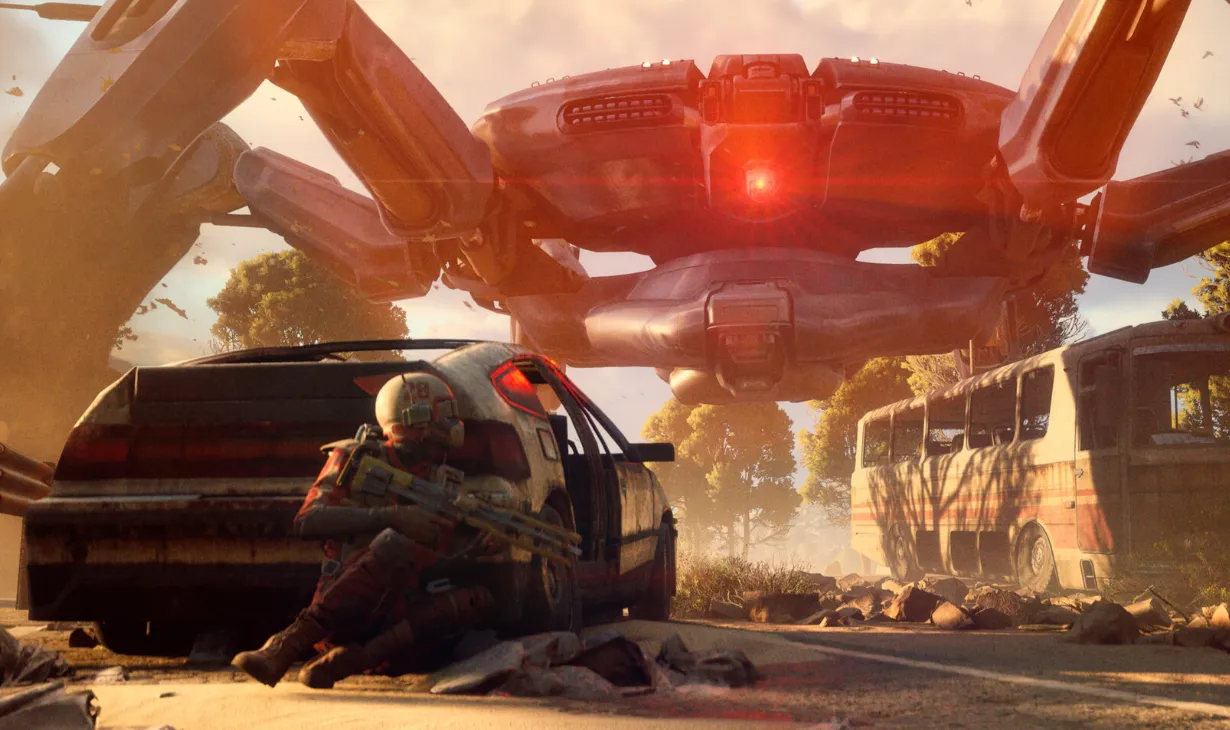In Arc Raiders, the Security Breach perk was never meant to be subtle. Buried at the end of the Survival skill tree, it turned those grey security lockers scattered around Dam, Spaceport, and Buried City into the most efficient loot engines in the game. For the first two weeks after launch, anyone who rushed the perk could chain “free kit” runs, open four or more lockers in a raid, and walk out dripping in epic weapons, wolfpack grenades, and rare materials.
Update 1.2.0 changed that overnight.
What the Arc Raiders Security Breach nerf actually did
Security Breach itself hasn’t changed: it still unlocks Security Lockers, and lockers still spawn in the same high‑value areas. The nerf lives entirely in the loot tables.
| Aspect | Before 1.2.0 | After 1.2.0 |
|---|---|---|
| Epic weapon frequency | Players commonly reported 1–2 epics from ~4 lockers, with some runs filling stashes with purples in a night. | Anecdotally closer to 1 purple in ~10 lockers; many runs yield only greens and blues. |
| Weapon frequency overall | Most lockers had at least one gun (often tier II or purple), alongside parts and grenades. | Guns are now a minority outcome; lockers often drop ammo, grenades, gun parts, and nothing else. |
| Blueprints | Realistic expectation was Bettina and gun-part blueprints, with rare stories of broader BP drops. | Similar or slightly lower; no evidence of improved BP odds, and some players report none over dozens of lockers. |
| Relative value vs. other containers | Clearly the best loot source in the game; better than keycard rooms and weapon cases. | Still above average, but closer to “good weapon case plus extra parts” than a guaranteed jackpot. |
| Economy impact | Enabled low‑risk, high‑reward free‑kit runs that devalued crafting, keys, and most loot routes. | Reduces purple inflation and makes crafted kits and key rooms relevant again. |
The official line is simple: security lockers were “over‑providing valuable items” and have been “adjusted.” Patch 1.2.0 also quietly mentions that Security Lockers have been tuned, confirming the change after players started noticing dramatically weaker pulls.

Why Security Breach was nerfed so aggressively
The perk had three big problems that were never going to coexist peacefully in a long‑running extraction game:
- Guaranteed routes, guaranteed payoff. Locker spawns are fixed. Once people mapped them, runs devolved into sprinting the same path, opening four lockers, and leaving. That squeezes out the organic “wander, improvise, and react” loop that Arc Raiders leans on.
- Low risk, top‑tier reward. You could drop in on a free kit, grab purple guns and Wolfpacks, and leave with almost no risk. The perk sidestepped the game’s usual risk curve—no expensive kit, no keycards, no PvE pressure if you avoided hot zones.
- One tree to rule them all. Compared to other capstones—things like “vaulting costs no stamina” or “melee one‑shots wasps and turrets”—Security Breach was in a different league. Either you specced into Survival for lockers, or you regretted not doing it.
By the time the nerf landed, stashes full of Bobcats, Tempests, Bettinas and Vulcanos weren’t rare screenshots; they were a normal outcome for anyone running night raids and beelining lockers. Some players loved the power fantasy. Others pointed out that it flattened progression and made crafted blues and keycard rooms feel like a waste of time.
How badly Arc Raiders Security Breach was nerfed in practice
There’s no public loot table, but hundreds of post‑patch anecdotes paint a consistent picture: the perk is no longer a purple firehose, but it hasn’t been deleted either.
| Post‑patch locker outcomes (player reports) | Rough pattern |
|---|---|
| 10–20 lockers | Mostly green/blue guns (Kettle II, Stitcher II, Hairpin II), ammo, grenades, light/medium/heavy gun parts; few or no epics. |
| ~50 lockers | “Best pull is a Toro II” with plenty of wolfpacks and parts, but no purple guns and no new weapon BPs. |
| Short sessions (3–5 lockers) | Individual stories of Venators, multiple Anvils, or a legendary Snap Hook still happen, but feel rare rather than expected. |
| Location sensitivity | Lockers in high‑value zones (like Blue Gate underground) still skew better than random towers or low‑tier rooms, but no longer guarantee purples. |
The key shift is this: the chance of getting any weapon at all has dropped, and the chance of that weapon being purple is dramatically lower. Many lockers now look like a supercharged ammo box—two lines of ammo and throwables, maybe a blue gun or complex gun parts if you’re lucky.
For a perk that requires 36–37 skill points in Survival (level 36 minimum), that feels harsh. By the time you reach it, you can often craft blues and selectively craft epics. Getting a common Kettle or Hairpin out of a noisy, contested locker can feel like an insult.
Is Security Breach still worth taking?
The uncomfortable answer: yes, but not for the same reasons.
Security Breach now competes in two dimensions:
- Within the Survival tree. You still keep all the good Survival nodes on the way up: extra carry weight, faster looting and breaching, in‑raid crafting, better reveal chances. Those alone make red one of the strongest trees.
- Against other capstones. The other end‑of‑tree perks are widely seen as underwhelming—things like small stamina quirks, situational healing, or melee bonuses against enemies that rarely sit in melee range. Even in a nerfed state, “more exclusive containers per raid” feels more impactful.
In other words, if you were already deep into Survival, you probably didn’t brick your character. You’ve locked in strong baseline perks and gained access to extra loot containers that no one else can touch. That’s still a powerful economic edge, even if it no longer spits out three Bobcats a night.
Where the perk feels questionable is for fresh characters planning their first build:
- If your main goal is raw PvP power as fast as possible, early Mobility and Conditioning points into stamina, movement, and basic survivability may give you more consistent returns.
- If you enjoy being the squad’s quartermaster—funding kits, keeping meds and parts flowing—Security Breach still delivers a steady stream of mats, ammo, and occasional high‑tier guns without spending keys.

Why the timing and communication stung so much
Mechanically, the nerf solves real problems. The backlash is mostly about when and how it landed.
| Pain point | What happened | Why players are frustrated |
|---|---|---|
| No advance warning | The drop‑rate change hit with patch 1.2.0 without being called out in the initial patch notes. | Players grinding toward level 36 had no chance to change course before the perk they were chasing was weakened. |
| Post‑hoc patch note edit | The Security Locker line was added to the notes after people noticed the nerf and raised it in public channels. | “We missed it” reads as damage control to many, especially when the missing note was the most controversial change. |
| No easy respec | Right now, resetting your skill tree requires committing to an Expedition project, gathering massive resources, and effectively prestiging your character. | Anyone who sunk 30+ points into Survival for Security Breach is stuck unless they’re willing to wipe their progress. |
| Early adopters vs. latecomers | Players who rushed the perk before the nerf emerged with stashes full of epics and rare parts. | Casual players working toward the same endpoint now unlock a weaker version, creating a sense of having “missed the window.” |
The studio has acknowledged the impact and has started talking about a more accessible skill reset mechanic, separate from Expeditions. There’s no timing or implementation detail yet, but the intent is on the table: overperforming and underperforming skills will continue to be tuned, and respec should eventually match that reality.
How to adapt your Arc Raiders builds after the Security Breach nerf
If you already have Security Breach, the question is less “should I respec?” and more “how do I use it now that it isn’t broken?” A few patterns emerge from current player behavior:
- Treat lockers as opportunistic, not mandatory. Before 1.2.0, it made sense to route every run around security lockers. Now they’re closer to a premium side stop. Hit them when they’re on your way to quests, key rooms, or ARC objectives, rather than building your entire run around them.
- Prioritize lockers in high‑value zones. Lockers in red, high‑tier areas still seem to roll better than ones in low‑value buildings. On Dam and Buried City, that usually means underground complexes and secure facilities instead of random towers.
- Think in materials, not just guns. Complex gun parts and high‑tier resources are still common drops. If your workbench is the bottleneck, a locker that spits out parts instead of a purple gun is still doing work.
- Leverage the rest of the Survival tree. Double down on what red still does best: more carry weight for dragging out other people’s gear, faster looting to win races on contested containers, and in‑raid crafting for kit flexibility.
If you haven’t reached Security Breach yet, you have options:
- Slow‑play Survival. Take the high‑impact red perks early (carry weight, looting speed, reveal chance) and delay going all the way to the capstone until respec options improve or further tuning lands.
- Hybrid builds. Split your early points across Mobility and Survival—enough stamina and speed to stay alive, enough red perks to keep your economy healthy—without committing fully to any capstone yet.
- Commit if you like the role. If your favorite moments are opening containers that no one else can touch and kitting out friends from your stash, Security Breach still supports that fantasy, just with less spectacle.

What this says about Arc Raiders’ long‑term balance
The Security Breach nerf lands in the same update that trims XP from several ARC types and tweaks loot sources elsewhere. Together, they push the game away from a sprint‑to‑max‑gear meta and toward a slower, more curated progression curve.
There’s a tension here: the early chaos of a new extraction shooter is part of its charm. Players discover busted routes, flood social feeds with loot vault screenshots, and the people who no‑life the first two weeks feel like outlaws. Eventually, though, those outliers harden into a meta that chews through more casual players and flattens the game’s risk‑reward structure.
Security Breach sat right at that fault line. It was the most obviously “wrong” thing in the early sandbox, and it got corrected in the way live games usually do: quickly, a little too hard, and with communication that showed up a beat late.
The perk is no longer a golden ticket. It’s a solid economic booster living at the end of an already strong tree. If you were chasing it for a shortcut to endless purple guns, that era is over. If you see yourself as the raider who always has spare ammo, grenades, and parts to share, it’s still quietly doing that job—just without the fireworks.


